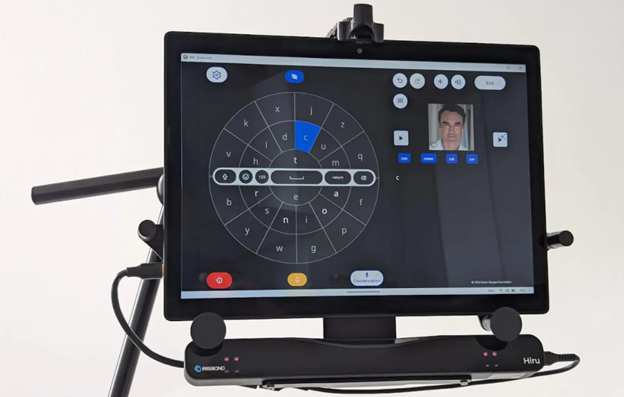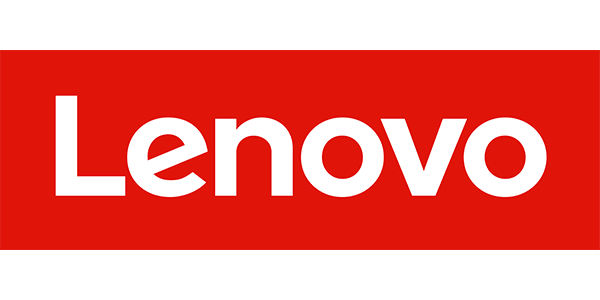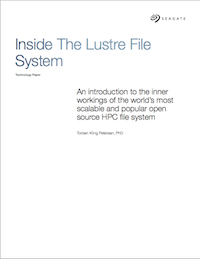
Voice generation system developed by Lenovo in partnership with the Scott-Morgan Fundation and ElevenLabs, D-ID and IrisBond
[SPONSORED GUEST ARTICLE] The big generative AI bang of November 2022 — OpenAI’s release of ChatGPT — stands as one of the great upheavels in the history of high tech in general and HPC-AI specifically. Now, two years later, we’re seeing new AI solutions that are addressing big challenges and changing peoples’ lives.
This past October at the annual Lenovo Tech World conference, the company featured the theme of “AI for Good,” exploring end-to-end solutions driven by its “Smarter AI for All” mission. The initiative counters much of the negative narrative around AI and its use for nefarious purposes.
One such AI for Good project taken on by Lenovo is their work with the Scott-Morgan Foundation (SMF), a non-profit organization conducting pioneering work in assistive tech.
At Tech World ‘24, Lenovo and SMF demonstrated an AI-powered solution for people with amyotrophic lateral sclerosis (ALS), also called Lou Gehrig’s Disease, and other severe disabilities. Specifically, the solution enables people whose vocal capabilities have been impaired by ALS to use AI to speak expressively and naturally, in their own voice and personality.
The scalable tech combines a circular keyboard interface designed by SMF and built by Lenovo, predictive AI from Lenovo, personalized AI voice replicas from voice tools company ElevenLabs, hyper-realistic avatars from D-ID, and eye-tracking tech from IrisBond to provide fast, accurate and individualized communications.
The proof of concept, now being tested by SMF’s community of people with ALS and clinicians, builds on years of collaboration between SMF and Lenovo. Focusing on ALS, a neurodegenerative disorder that typically leads to full-body paralysis, the testing could inspire solutions that address other diseases and disabilities.
The conference opened (see this video) with a story of a father recently diagnosed with ALS using the technology to tell stories and sing lullabies to his two young children in his own voice.
 Previous attempts to address this problem typically used “voice banking,” an arduous process often limited by the vocal deterioration that is often an early ALS symptom. Past models also tended to have robotic cadences and unnatural rhythms. But AI is changing that. Now, limited audio samples, even of poor quality, can generate a compelling, on-demand voice which sounds like the person’s voice.
Previous attempts to address this problem typically used “voice banking,” an arduous process often limited by the vocal deterioration that is often an early ALS symptom. Past models also tended to have robotic cadences and unnatural rhythms. But AI is changing that. Now, limited audio samples, even of poor quality, can generate a compelling, on-demand voice which sounds like the person’s voice.
That customized voice feeds directly into the avatar technology from D-ID. Again, scalability and ease are a priority with assistive tech, and D-ID can generate lifelike avatars from still photos or very limited video.
The complete solution runs on Lenovo’s ThinkPad X12 detachable tablet, which offers a union of power and portability. The device is detachable and can be mounted on various surfaces, such as kitchen tables and wheelchairs. IrisBond’s eye-tracking hardware and software consists of their Hiru camera, which works across different platforms and under different conditions to precisely track eye movement. Lenovo is also developing more personalized AI models to facilitate communication.
“We live in a world where over half a billion people are silenced, not by choice, but by disability,” said LaVonne Roberts, Executive Director of SMF. “Imagine a world where even the most severely disabled individuals can fully express themselves, where cutting-edge technology gives voice to the voiceless. We’re not just imagining this world—we’re building it together with Lenovo. With over 500 million people worldwide grappling with muscular or neurological conditions, our work has the potential to impact lives on a massive scale.”
Building on early designs first unveiled at CES 2024, Lenovo spearheaded the development of a fully functional, fully integrated prototype.
“We prioritized human-centric design and leveraged our expertise in innovative user experiences,” said Lenovo UX prototyper Daniel Pollock, who led the interface development. “It’s an absolute privilege to contribute and collaborate on this project and incorporate such powerful AI technology.”
For more information visit Lenovo Story Hub.



